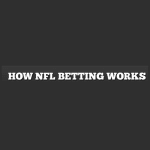Understanding Odds Formats
Odds formats are diverse and varying, tailored to cater to the preferences of different bettors. Decimal odds, commonly used in Europe, represent the amount one could win for each unit staked. For instance, odds of 3.00 signify a potential win of $300 for a $100 bet, including the initial stake.
On the other hand, fractional odds, traditional in the UK, are displayed as a fraction. The numerator indicates potential profit, while the denominator reflects the stake required. So, odds of 2/1 yield $200 profit for a $100 bet. Converting fractional odds to decimal can be done by adding 1 to the fraction, making 2/1 equivalent to 3.00.
Decimal Odds Explained
One of the most common ways to represent betting odds is through decimal odds. In this format, the odds are displayed as a decimal number, typically greater than 1. For example, if the odds are 2.50, this means that for every unit you bet, you would receive a total of 2.50 units back – your original stake plus 1.50 units of profit.
Decimal odds are quite straightforward to understand and calculate potential winnings with. To determine the potential payout for a bet, you simply multiply your stake by the decimal odds. For instance, if you bet $10 on odds of 3.00, your potential winnings would be $30 (10 x 3.00 = 30). Decimal odds allow for quick and easy calculations, making them a popular choice among bettors who prefer simplicity.
Fractional Odds Explained
Fractional odds are commonly used in the UK and Ireland, presenting the relation between the amount to be wagered and the potential profit. For instance, if the odds are displayed as 2/1, it means that for every £1 wagered, you could potentially win £2 plus your initial wager back. However, it’s worth noting that fractional odds can appear in different formats, such as 5/2 or 6/4, indicating the potential profit relative to the stake.
Understanding fractional odds is crucial for bettors looking to make informed decisions when placing bets. By grasping these odds, individuals can calculate the potential winnings and assess the implied probability of an outcome occurring. For instance, if the odds are shown as 1/4, this implies a higher probability of the event happening compared to if the odds were 4/1, denoting a lower likelihood of success.
American Odds Explained
American odds, also known as moneyline odds, are commonly used in the United States and favored by many sports bettors. These odds are presented with either a plus (+) or minus (-) sign in front of the number, indicating whether the team or player is the favorite or underdog. For instance, if you see odds of +150, it means that a $100 wager would result in a $150 profit if the bet is successful.
On the other hand, if you come across odds of -200, this signifies that you would need to wager $200 in order to make a $100 profit. It’s important to note that when the odds are positive, they represent the potential profit on a $100 stake, while negative odds indicate the amount you need to bet to win $100. This simple system makes it easy for bettors to quickly understand the potential payouts for different wagers.
Implied Probability in Betting Odds
When looking at betting odds, the implied probability is a crucial concept to understand. It represents the likelihood of an outcome happening based on the odds provided by bookmakers. Calculating the implied probability involves converting the odds into a percentage, reflecting the bookmaker’s opinion on the likelihood of an event occurring. The higher the implied probability, the more likely the bookmaker believes the outcome will happen, and vice versa.
In essence, implied probability is a reflection of the perceived chance of success for a particular bet. By converting odds into probabilities, bettors can determine if a wager offers value by comparing the implied probability to their own calculated probability. This is a key aspect of making informed betting decisions, as it allows bettors to assess the potential risk and reward associated with a bet based on the likelihood of a specific outcome.















